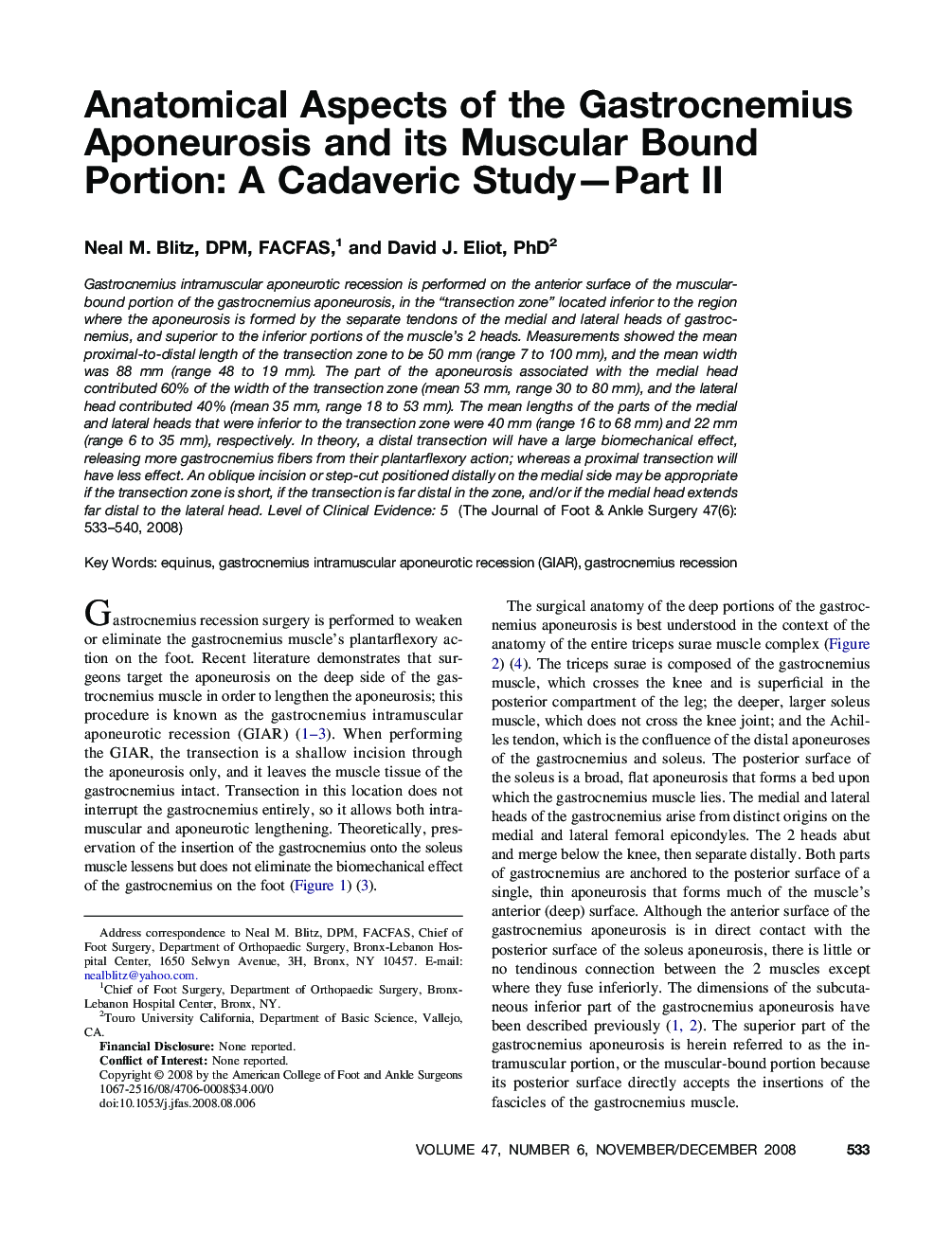| Article ID | Journal | Published Year | Pages | File Type |
|---|---|---|---|---|
| 2713607 | The Journal of Foot and Ankle Surgery | 2008 | 8 Pages |
Gastrocnemius intramuscular aponeurotic recession is performed on the anterior surface of the muscular-bound portion of the gastrocnemius aponeurosis, in the “transection zone” located inferior to the region where the aponeurosis is formed by the separate tendons of the medial and lateral heads of gastrocnemius, and superior to the inferior portions of the muscle's 2 heads. Measurements showed the mean proximal-to-distal length of the transection zone to be 50 mm (range 7 to 100 mm), and the mean width was 88 mm (range 48 to 19 mm). The part of the aponeurosis associated with the medial head contributed 60% of the width of the transection zone (mean 53 mm, range 30 to 80 mm), and the lateral head contributed 40% (mean 35 mm, range 18 to 53 mm). The mean lengths of the parts of the medial and lateral heads that were inferior to the transection zone were 40 mm (range 16 to 68 mm) and 22 mm (range 6 to 35 mm), respectively. In theory, a distal transection will have a large biomechanical effect, releasing more gastrocnemius fibers from their plantarflexory action; whereas a proximal transection will have less effect. An oblique incision or step-cut positioned distally on the medial side may be appropriate if the transection zone is short, if the transection is far distal in the zone, and/or if the medial head extends far distal to the lateral head. Level of Clinical Evidence: 5
